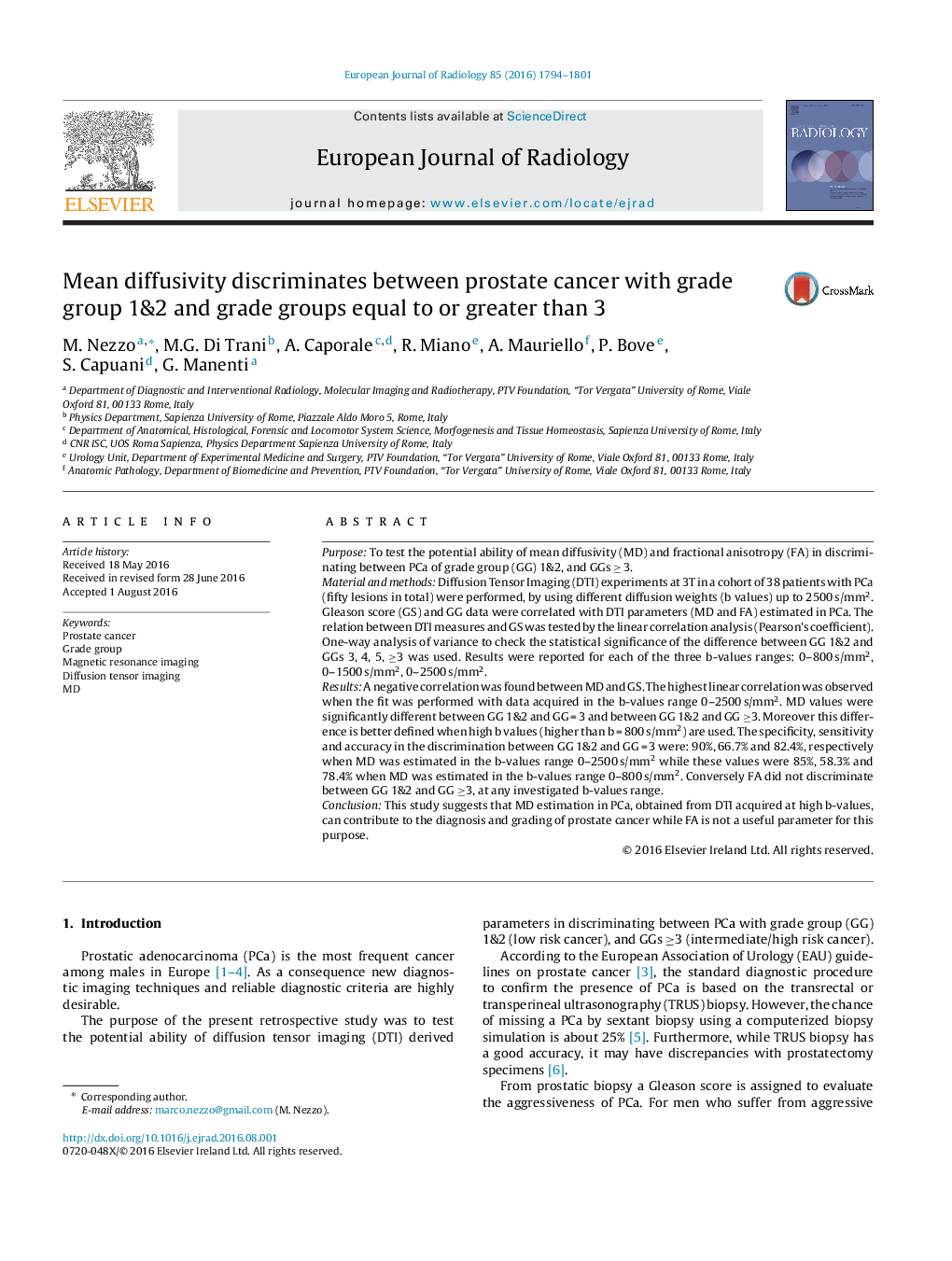| Article ID | Journal | Published Year | Pages | File Type |
|---|---|---|---|---|
| 4224913 | European Journal of Radiology | 2016 | 8 Pages |
PurposeTo test the potential ability of mean diffusivity (MD) and fractional anisotropy (FA) in discriminating between PCa of grade group (GG) 1&2, and GGs ≥ 3.Material and methodsDiffusion Tensor Imaging (DTI) experiments at 3T in a cohort of 38 patients with PCa (fifty lesions in total) were performed, by using different diffusion weights (b values) up to 2500 s/mm2. Gleason score (GS) and GG data were correlated with DTI parameters (MD and FA) estimated in PCa. The relation between DTI measures and GS was tested by the linear correlation analysis (Pearson's coefficient). One-way analysis of variance to check the statistical significance of the difference between GG 1&2 and GGs 3, 4, 5, ≥3 was used. Results were reported for each of the three b-values ranges: 0–800 s/mm2, 0–1500 s/mm2, 0–2500 s/mm2.ResultsA negative correlation was found between MD and GS. The highest linear correlation was observed when the fit was performed with data acquired in the b-values range 0–2500 s/mm2. MD values were significantly different between GG 1&2 and GG = 3 and between GG 1&2 and GG ≥3. Moreover this difference is better defined when high b values (higher than b = 800 s/mm2) are used. The specificity, sensitivity and accuracy in the discrimination between GG 1&2 and GG = 3 were: 90%, 66.7% and 82.4%, respectively when MD was estimated in the b-values range 0–2500 s/mm2 while these values were 85%, 58.3% and 78.4% when MD was estimated in the b-values range 0–800 s/mm2. Conversely FA did not discriminate between GG 1&2 and GG ≥3, at any investigated b-values range.ConclusionThis study suggests that MD estimation in PCa, obtained from DTI acquired at high b-values, can contribute to the diagnosis and grading of prostate cancer while FA is not a useful parameter for this purpose.
